Fujifilm X70
Little camera, big ambitions
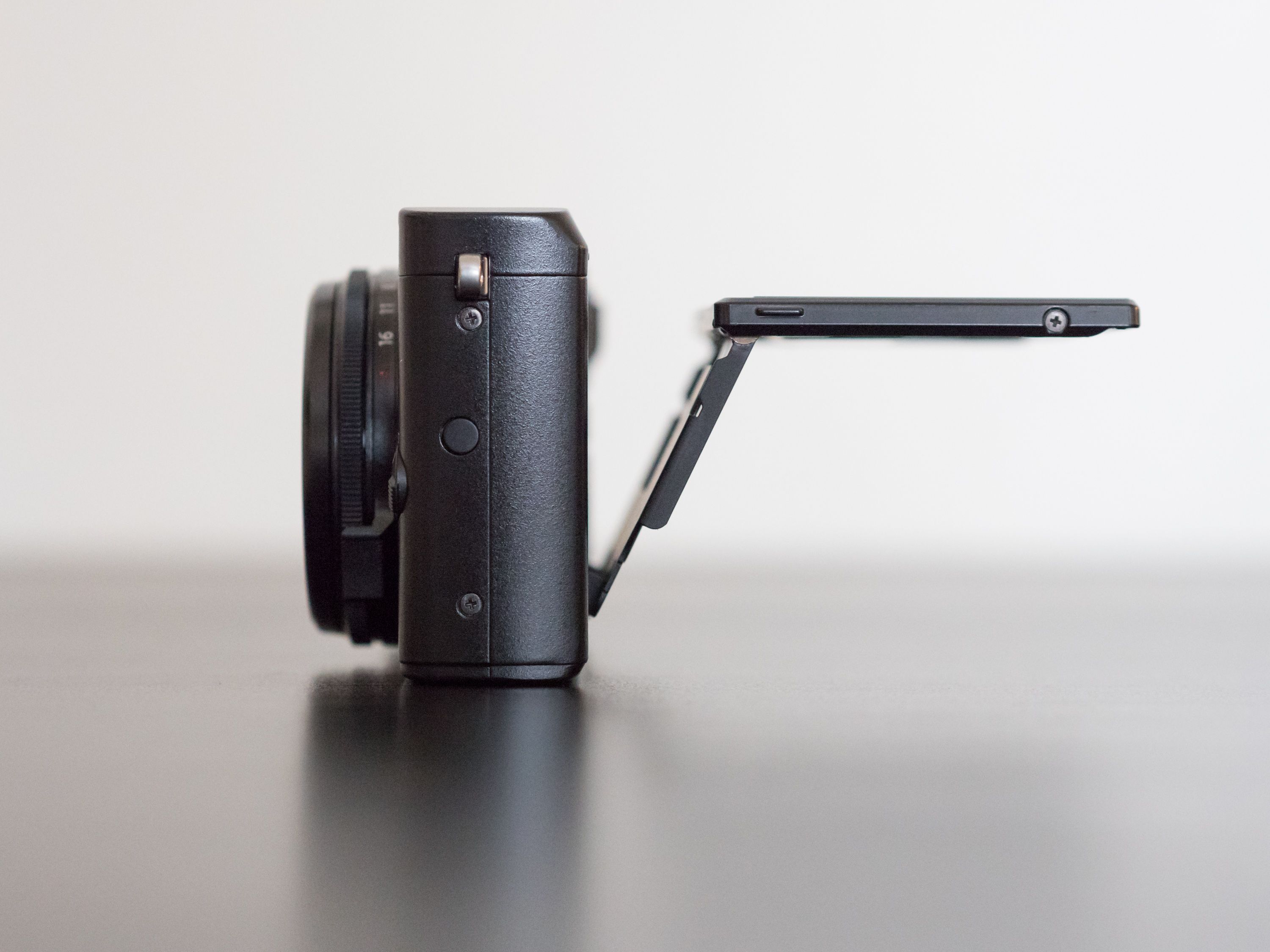
When the announcement hit that Fuji was adding the X70 to the family, I shrugged and rushed to look at the X-Pro 2 instead.
I wasn’t interested in a new compact camera.
Then I got a chance to spend a couple of months with the X70, and from the moment I picked it up and started shooting I realized my mistake. The X-Pro 2 is a professional’s dream, but this…this is the camera that’s going to put the X Series in the hands of more people than ever before.
X70 vs. X100T: The Obvious Comparison
There are two or three cameras that people have been comparing the X70 to. The most obvious is its own sibling, the X100T, but beyond that we have similar compacts like the Ricoh GR and Sony’s RX100 series.
What stands out to me is how well the X70 manages to bring together the best aspects of those cameras.
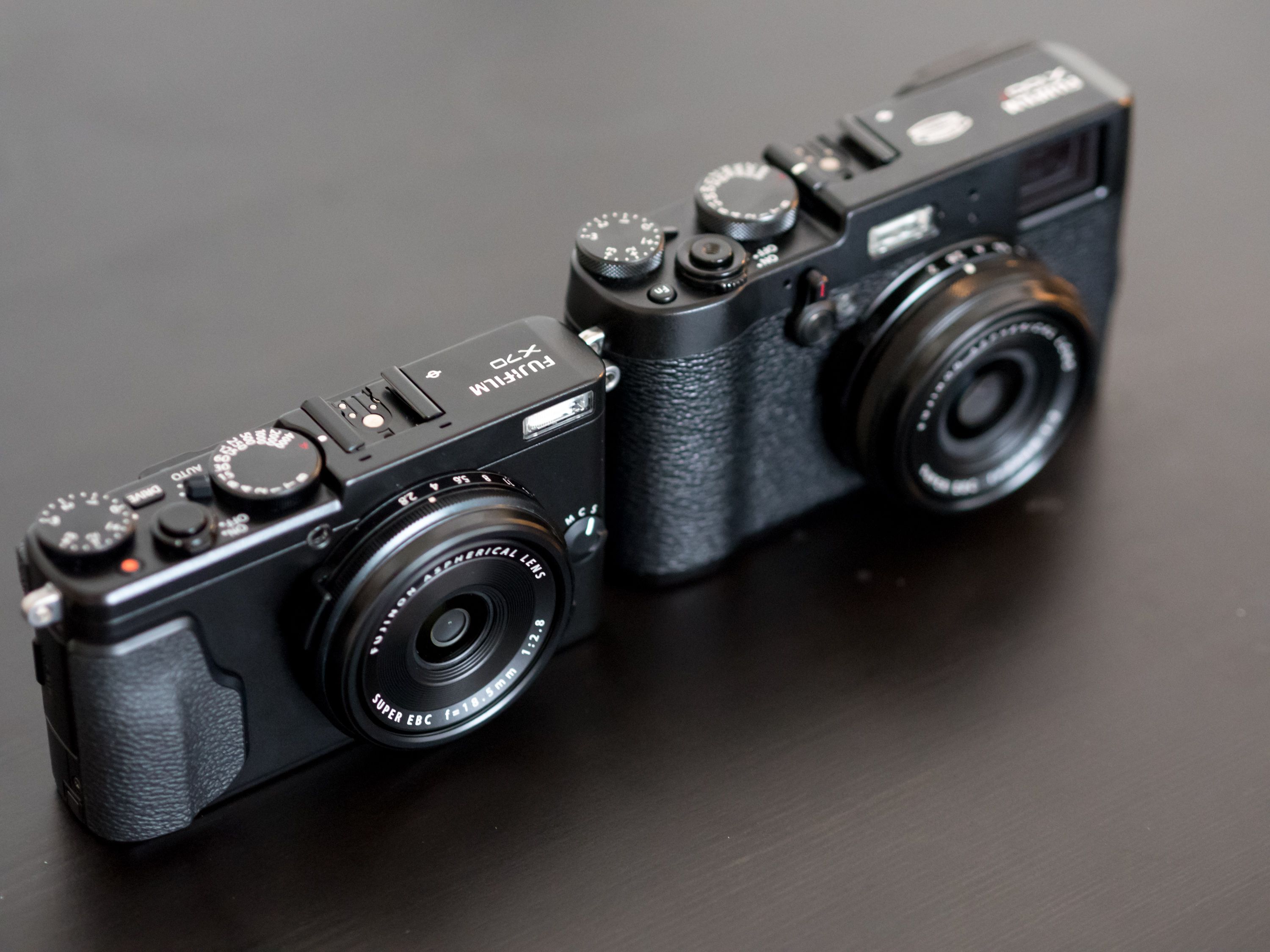
I shot it alongside my X100T, and I suspect that it’s this comparison that will be of interest to most people. If you’re choosing a Fuji compact camera and you want to get something with the same image quality as one of the pro bodies, then you’ll be deciding between these two.
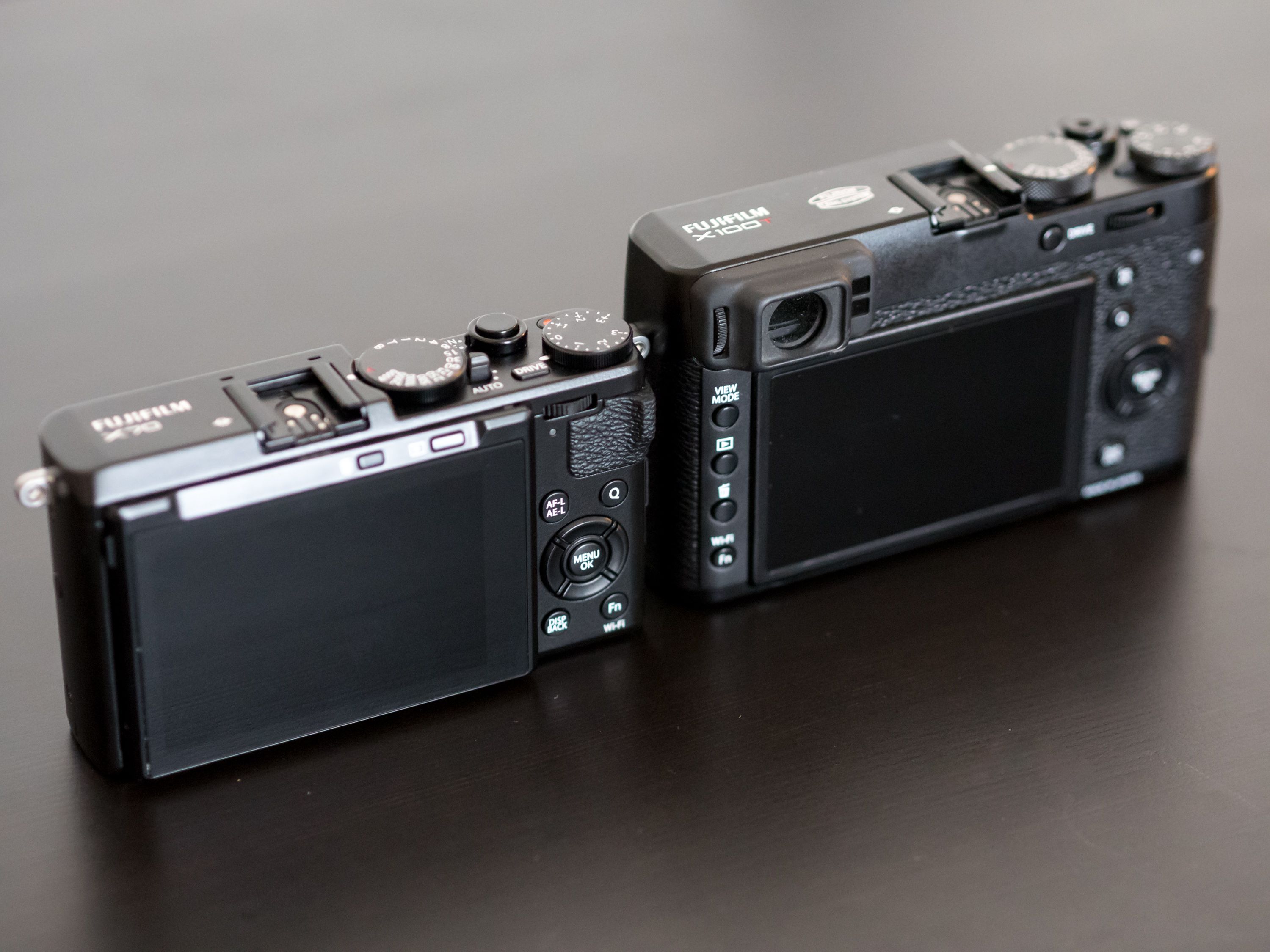
Easier said than done.
For starters, there’s a $700 difference in price between the two, which is going to be an important factor in the decision making process, but for the purposes of this comparison let’s pretend price is no object.
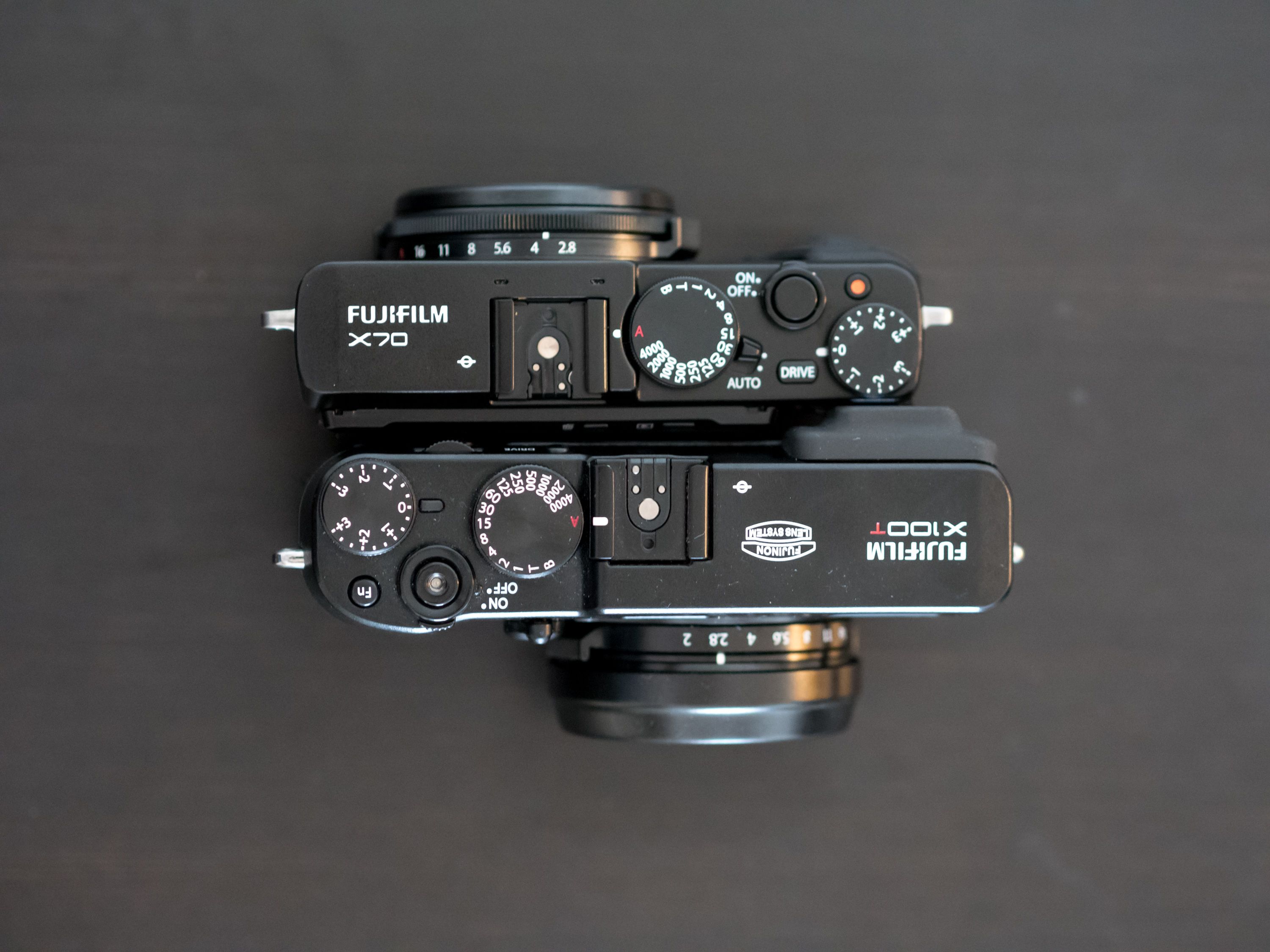
Wise Size
The X70 shaves off enough millimetres in each direction to make a significant difference in comparison to its bigger brother’s dimensions, but not enough to completely change the ergonomics. It’s just enough to make it pocketable.
The narrower top plate does mean that the shutter button gets squeezed in closer though, which for larger hands will be noticeably less comfortable. The shutter button itself also lacks the threading of the X100T’s, so you’re out of luck if you want to trigger it via a cable or add a custom soft release button.
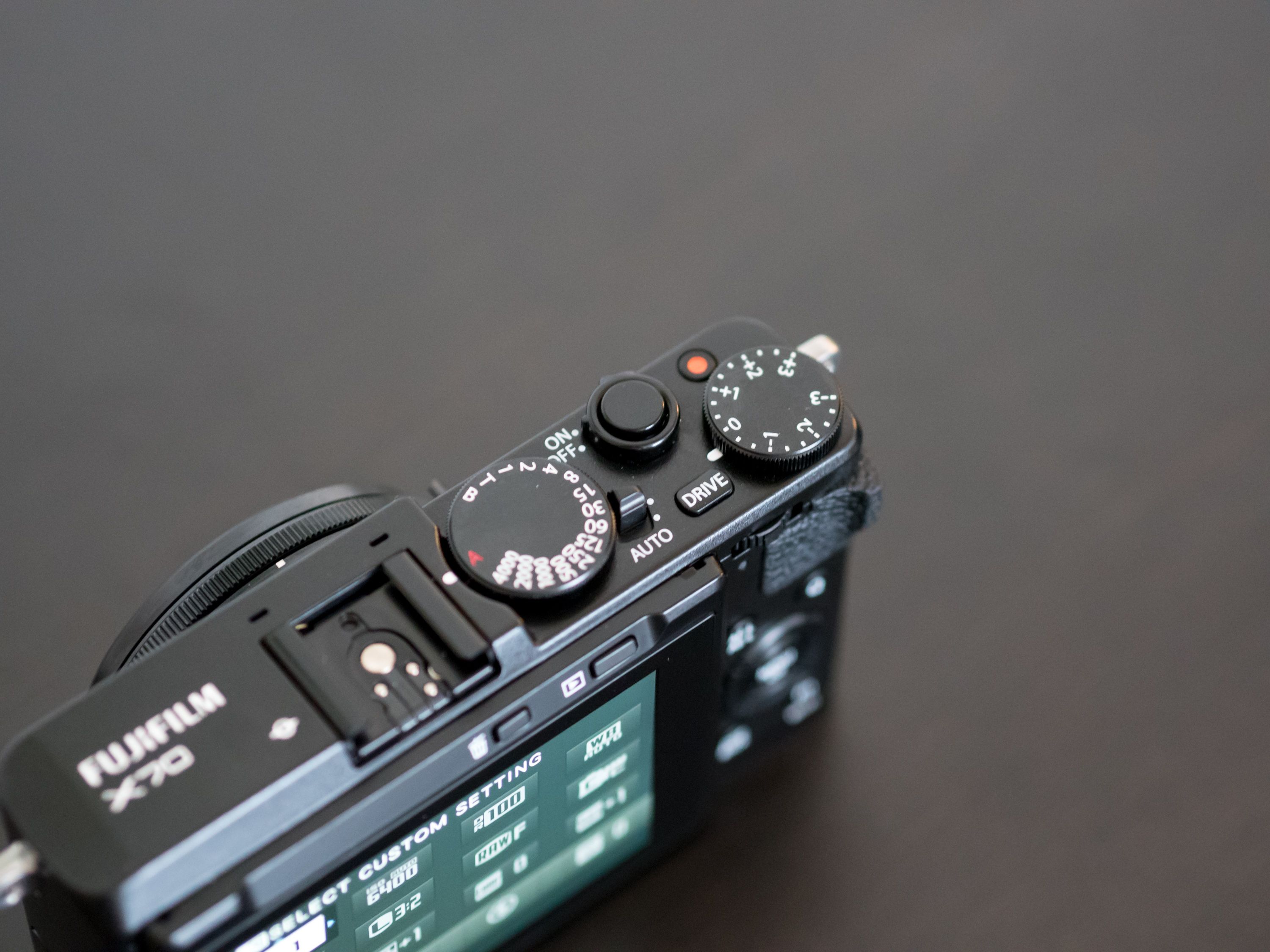
The reduced depth also means you lose the extra bit of grip that you’d get on the X100T. Luckily, the X70 has a more pronounced thumb ridge on the back that helps make up for this, and it’s lighter too so there’s less weight to manage overall.
Otherwise, the arrangement of controls is very familiar and there’s enough space between critical control points to make it easy to make adjustments.
Unlike the more pro-focused X100T, the X70 has a dedicated switch for Auto mode, which immediately flips the camera into autopilot regardless of where the shutter and aperture dials are. While this is obviously aimed at less experienced photographers, there’s also value in being able to quickly flip it into Auto before handing it to someone to take a picture of you, or making it easy for friends and family to try it out without getting annoyed.
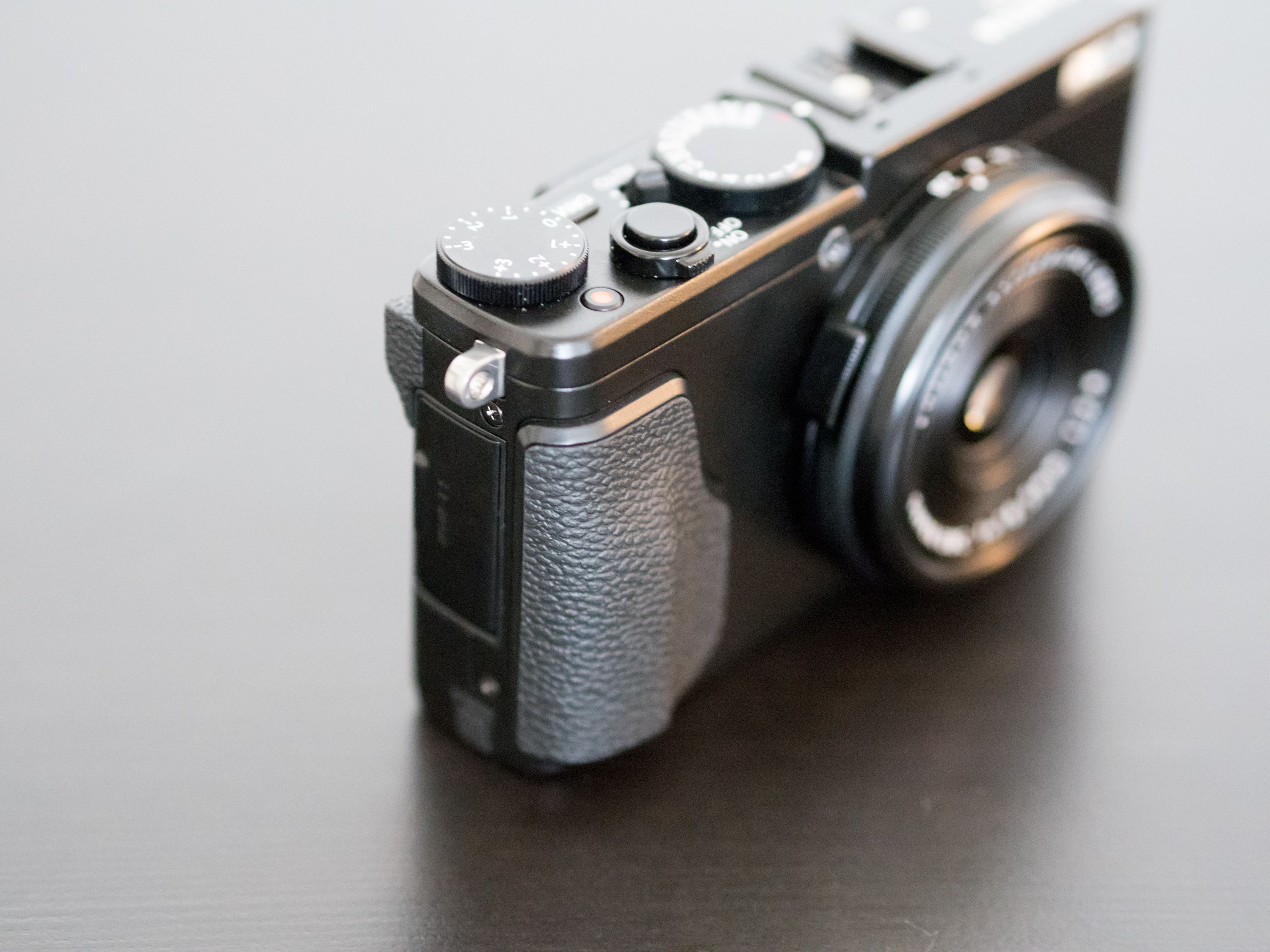
28mm
The X70’s 28mm focal length is wide enough to fall outside the normal comfort zone of most photographers, and it can be daunting to have so much in the frame when you’re composing a shot.
Not to mention the need to get up close and personal with your subjects if you want to do some street shooting. Being stealthy is easier with a smaller camera though, and the articulating screen encourages the use of unusual angles.
 As always, the Fujifilm ‘Classic Chrome’ film simulation is charming straight out of the camera, no edits needed.
As always, the Fujifilm ‘Classic Chrome’ film simulation is charming straight out of the camera, no edits needed.
For casual shooters, the fact that it’s a fixed focal length lens will be frustrating. You have to zoom with your feet, and while this keeps you more involved in the photographic process, it also imposes limits on what kinds of things you can shoot effectively with this camera.
Actually, Fuji has included a “Digital Tele-Converter” option that will allow you to shoot at 35mm and 50mm focal lengths as well, but this is achieved by cropping the 28mm image and re-sizing the result back up to 16MP using some clever interpolation.
It feels like a gimmick and isn’t something I would use. I can always crop in post if I really want that look.
Of more interest is the physical wide-angle conversion lens that Fuji sells to help you go in the other direction: the WCL-X70 optically adjusts the focal length to a 21mm equivalent, giving you an even wider perspective. The lens wasn’t available yet when I was testing the X70, but if it’s anything like the two for the X100 series, it’s going to be a perfect way to add some versatility to your setup.
Optics
I was also surprised at how well the X70 performed shooting wide open (the aperture is a slightly slower ƒ/2.8 instead of the X100T’s ƒ/2) in close quarters. The X100 series’ lens is notorious for going a bit mushy when trying to shoot macro wide open, but the X70 has no such quirks.
In fact, I’d probably go so far as to say that the X70’s lens is generally sharper than the X100T’s (at least between my two units), and performs more consistently corner to corner at various aperture settings. I truly hope that the next generation of X100 camera gets a revised lens to bring things up to par with the magnificent advances in glass manufacturing that the company has made in recent years.
One other optical aspect worth mentioning is the X70’s lack of a built-in ND filter. I used the X100T’s all the time and I missed it a lot on the smaller camera. The ability to use wider apertures in daylight shooting without having to screw on a physical ND filter is great.
Getting used to the 28mm perspective was a fun challenge, and one that inspired me to seek different kinds of shots than what I might otherwise pursue, which is always a good thing.
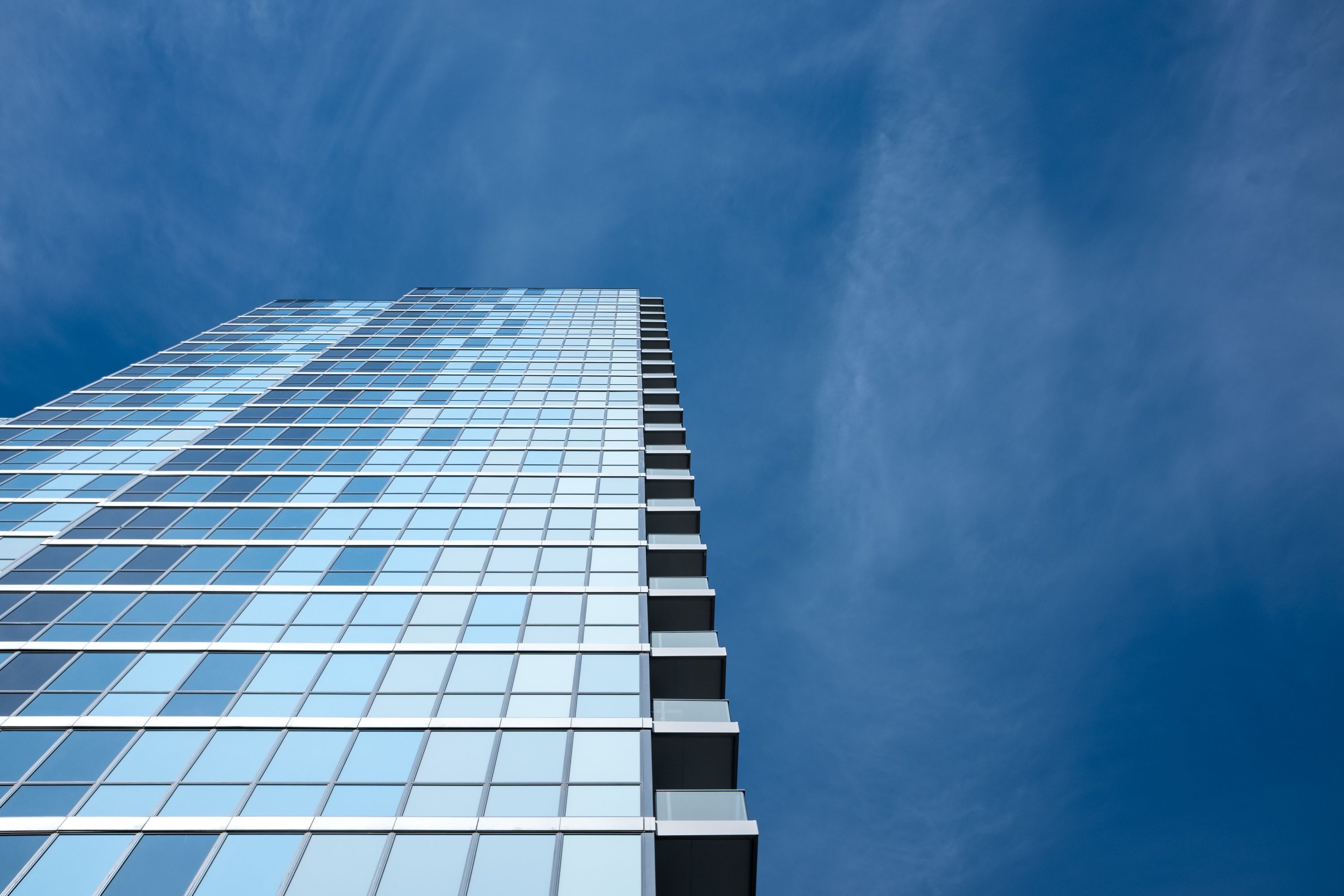 I found myself noticing interesting angles in architecture, which prompted a series of shots like this one.
I found myself noticing interesting angles in architecture, which prompted a series of shots like this one.
Seeing Clearly
Besides the lens, the other major difference between the X70 and X100T is the absence of an Electronic Viewfinder (EVF) on the smaller camera. This is primarily what allowed Fuji to bring the size down, and the trade-off is an interesting one.
Having spent time with both cameras, I understand the appeal of the EVF, but I also recognize that it’s partly rooted in my history with cameras that have one (or have an OVF). The muscle memory of photography for me involves bringing the camera up to my eye, and there were more than a few instances during the first week where I brought the camera to my face like an idiot, expecting there to be an EVF for me to look through.
The target audience of the X70 is broader though, capturing some of the enthusiast/amateur crowd as well, for whom the absence of an EVF is irrelevant: they’re coming from iPhones and point-and-shoots.
If you’re worried about the EVF, the rule of thumb for camera gear applies: if you can’t clearly justify why you need a certain feature, you probably don’t.
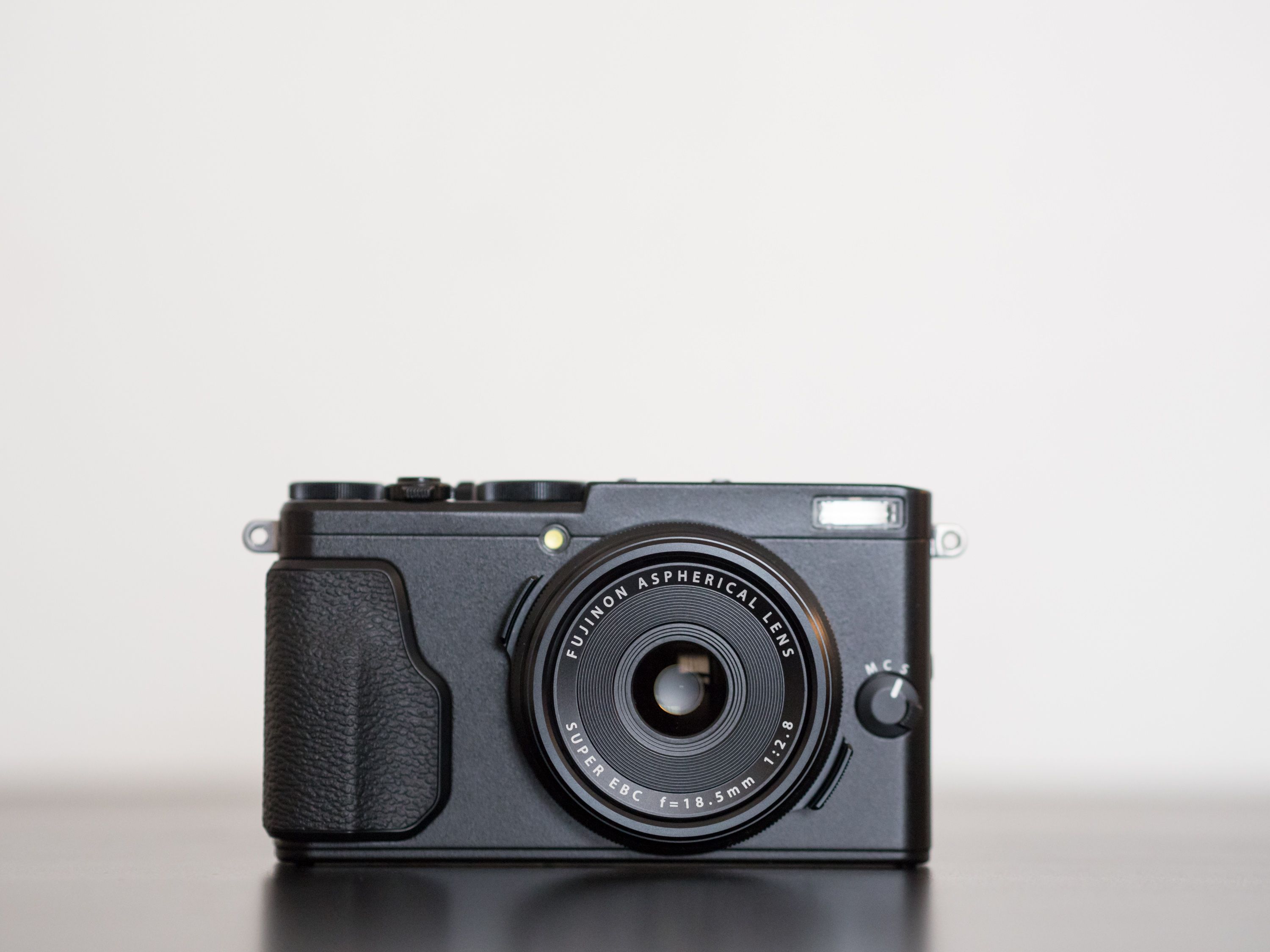
Travel Companion
There’s more to the X70 than how it compares to other cameras though: it’s an amazing creative tool worth considering independently, on its own merits.
For various reasons, I think the X70 is Fuji’s best camera for travel. In the same way the Leica Q appeals as a travel companion, the X70 fulfills the same role for people with normal-sized wallets or a preference for smaller, more agile cameras.
Wider angles are useful for capturing scenes instead of specifics, and the compact form factor makes it much easier to pack, carry, and shoot with on a busy day of exploring a new place.
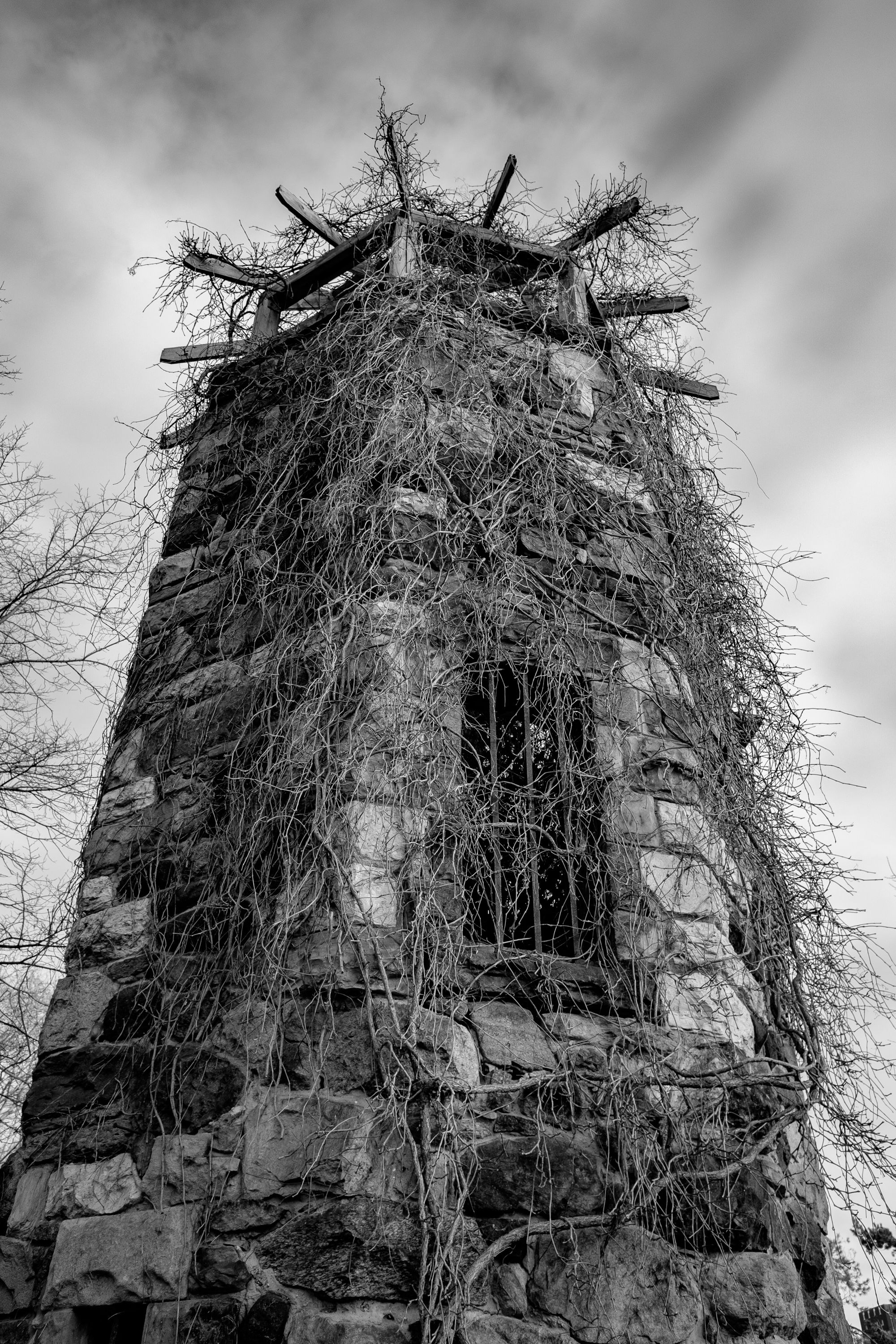
It also helps that the autofocus is so good. Not just fast, but accurate and reliable. This feeling is corroborated by Eric Kim, whose street-focused review highlights the performance in relation to his Ricoh GR II, which he says is slower to focus and buffer shots.
All I know is that the X70 never let me down on the focusing front. Admittedly, I wasn’t shooting quick action or kids with it so I didn’t exactly offer it a challenge, but in street shooting and normal travel work I found it performed perfectly.
One area where it did let me down—as all mirrorless cameras do, to be fair—is battery life. This is to be expected since the X70 uses the same five-year-old battery that was in the original X100. It’s time for Fuji, Sony, and all the rest to grit their teeth and introduce new batteries with their new cameras.
Yes, those of us who’ve bought multiple old ones will have to replace them, but I’d much rather have that than the hassle of having to carry, switch out, and charge tons of batteries…especially while on a trip.
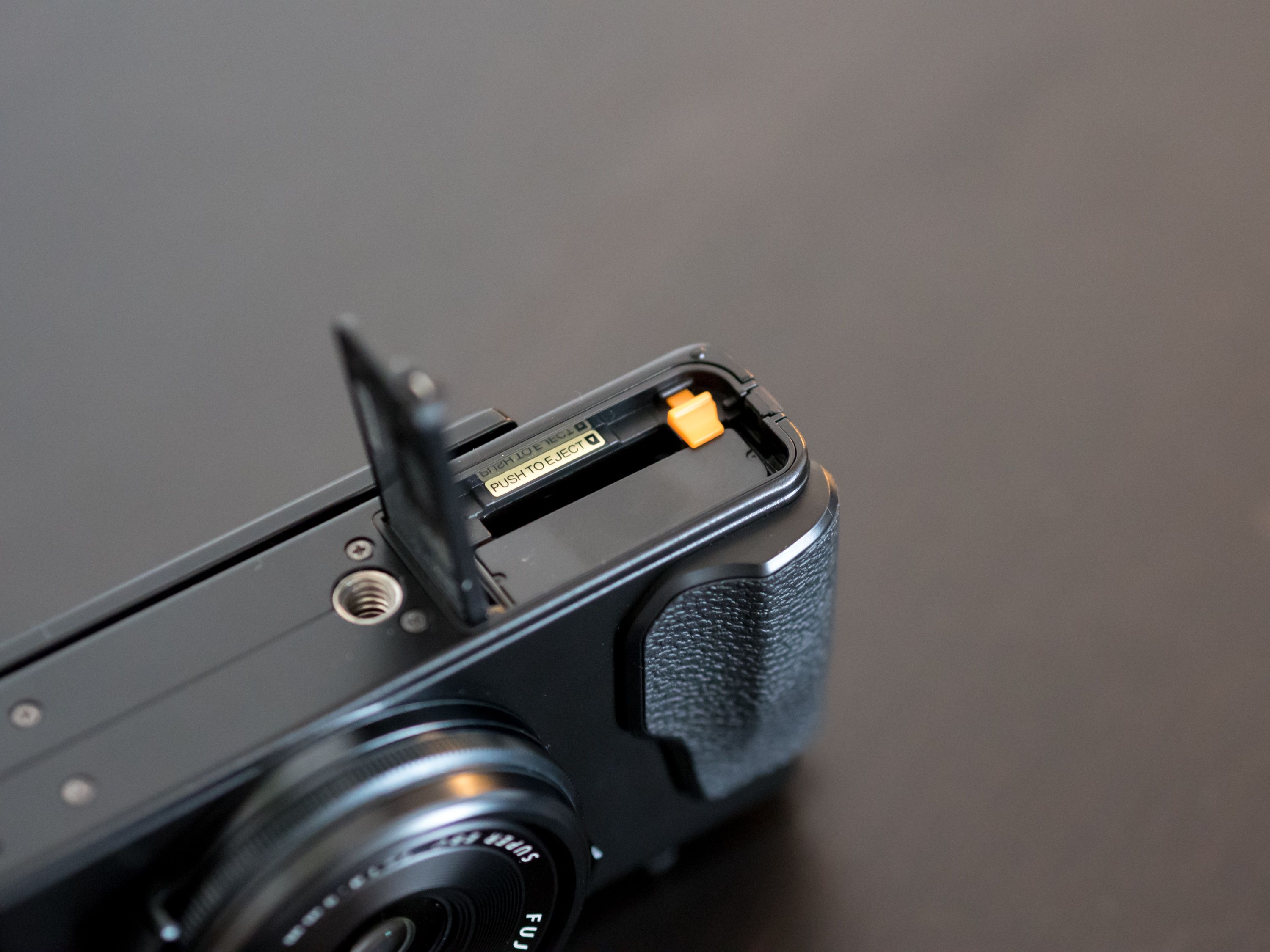 The X70’s battery lives alongside its SD card slot. Having been spoiled by the side-access slots of the X-T1 and X-Pro 2, it’s annoying to have the cards and batteries in the same compartment again. At least the door closes firmly.
The X70’s battery lives alongside its SD card slot. Having been spoiled by the side-access slots of the X-T1 and X-Pro 2, it’s annoying to have the cards and batteries in the same compartment again. At least the door closes firmly.
Image Quality & Shooting Experience
Knowing that your smaller setup doesn’t compromise on image fidelity is reassuring. It’s good to have the familiar 16MP X-Trans II sensor in such a small form factor.
Film Simulations
The X70 packs in all of the classic film simulations from the X100T, and shooters who have their camera in JPG mode (or raw+JPG like me), will appreciate the character and colour rendition imparted by these legendary presets.
While it’s common to see professional photographers grumble about shooting JPG, it’s amazing how many times I manage to get an image to look exactly the way I want just by composing it well, using good light, and leaning on the quality of Fuji’s colour science.
It’s almost as if the gear doesn’t matter! ? In all seriousness though, I shoot both raw+JPG so that I always have the maximum fidelity available for editing and archiving, but often I’ll just pull the JPG onto my iPad and share it directly, without touch-ups.
 Another building shot. I’m amazed by the detail captured by this lens, especially when treated properly. Pro tip for my fellow Lightroom users: feel free to crank the Detail slider when processing X-Trans files (hat-tip to Pete Bridgwood for the discovery), and make sure you keep the Masking slider up a fair ways in the Sharpening module to avoid unwanted artifacts in the sky and other places you don’t want to see the effect.
Another building shot. I’m amazed by the detail captured by this lens, especially when treated properly. Pro tip for my fellow Lightroom users: feel free to crank the Detail slider when processing X-Trans files (hat-tip to Pete Bridgwood for the discovery), and make sure you keep the Masking slider up a fair ways in the Sharpening module to avoid unwanted artifacts in the sky and other places you don’t want to see the effect.
Notably absent is the new Acros film simulation from the X-Pro 2, but that’s to be expected since its functionality is tied to the new X-Trans III sensor and X-Processor Pro from Fuji’s flagship camera.
You can still get gorgeous monochromatic images out of the camera though, and playing with the JPG settings can yield a variety of pleasing results.
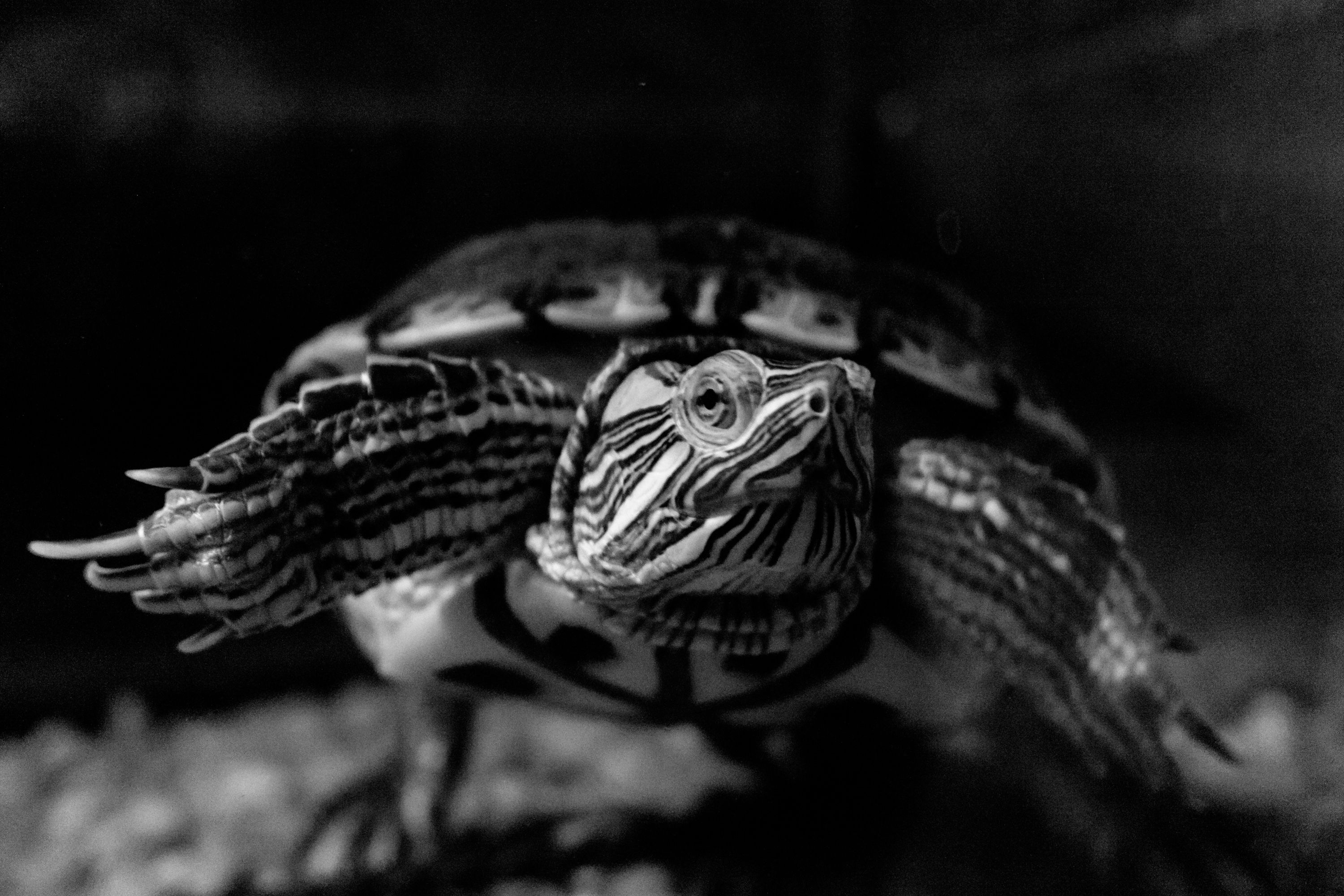 This is Jean-Claude. He guards The Box studio in Toronto if you ever want to go visit him.
This is Jean-Claude. He guards The Box studio in Toronto if you ever want to go visit him.
The raw files exhibit the same impressive editing latitude as I’ve come to expect from the sensor, and anyone who’s familiar with X-Trans files and their unique handling will feel right at home with the X70.
Harsh Conditions
My time with the camera took place during winter, so I got a good sense of how the camera performs and handles outdoors in challenging conditions. I’m pleased to report that the results were better than expected.
While it does get a bit lazy and the battery does drain faster in the cold (as with any camera), the little Fuji handles well even with gloves on, which is a testament to the intelligent layout of the controls.
The only exceptions are the video button (which I don’t use) and the rear command dial. This remains as thin and recessed as ever, and it makes me miss the prominent dials on Olympus cameras.
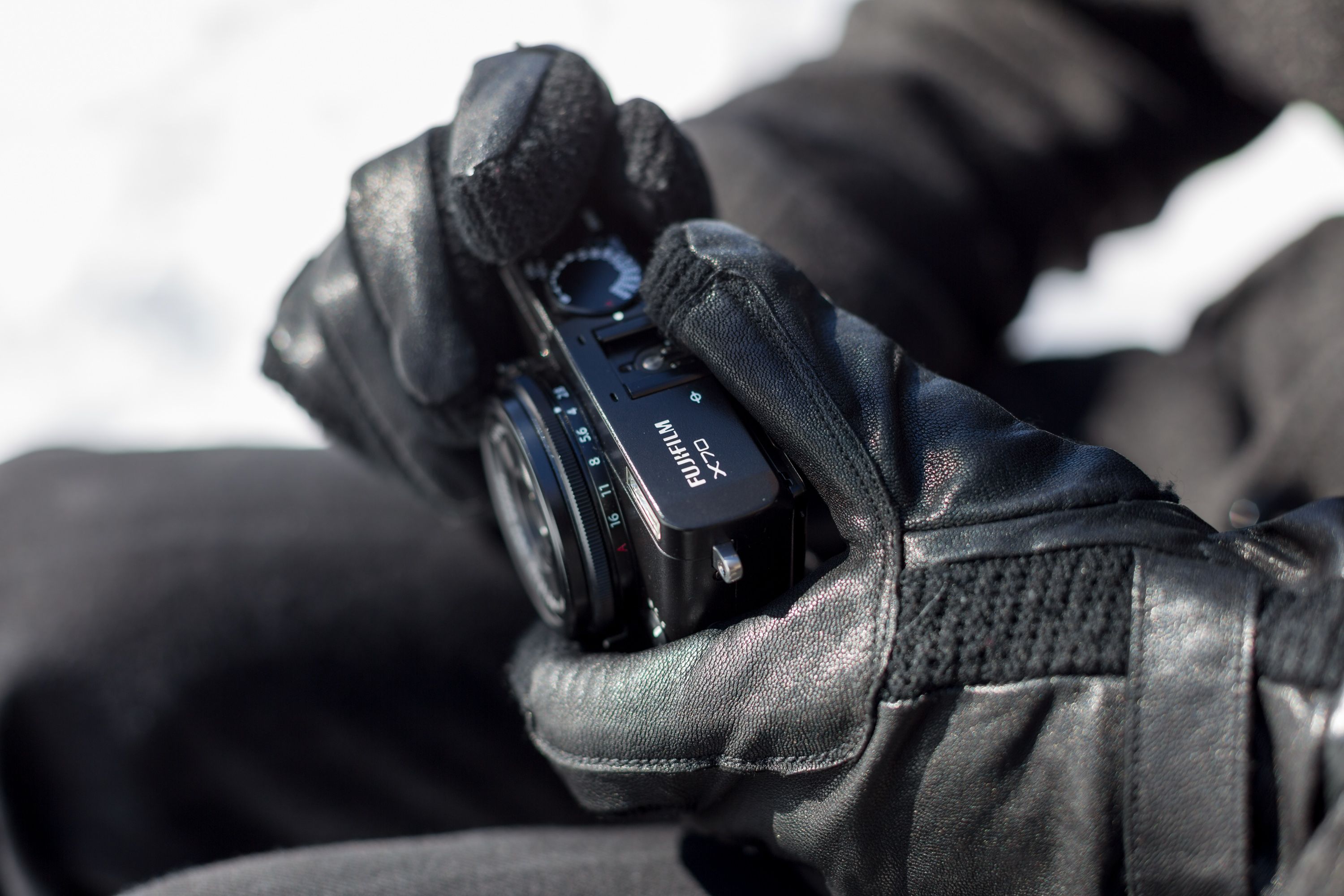
Video, Vlogging, and the Articulating Screen
Fuji’s disinterest in video is widely known, but the times are a-changin’ and the X70 is a step in the right direction.
While it may lack the 4K recording of some of its rivals (this is where the Sony RX100 comparison comes in), it also lacks the accompanying downsides like short recording times, overheating, and the need for large, fast SD cards to hold the footage.
Besides being fun for photographers, the touch-sensitive articulating LCD screen can flip a full 180° to face forward. This allows for easier selfies, but it also makes the X70 a perfect camera for vloggers.
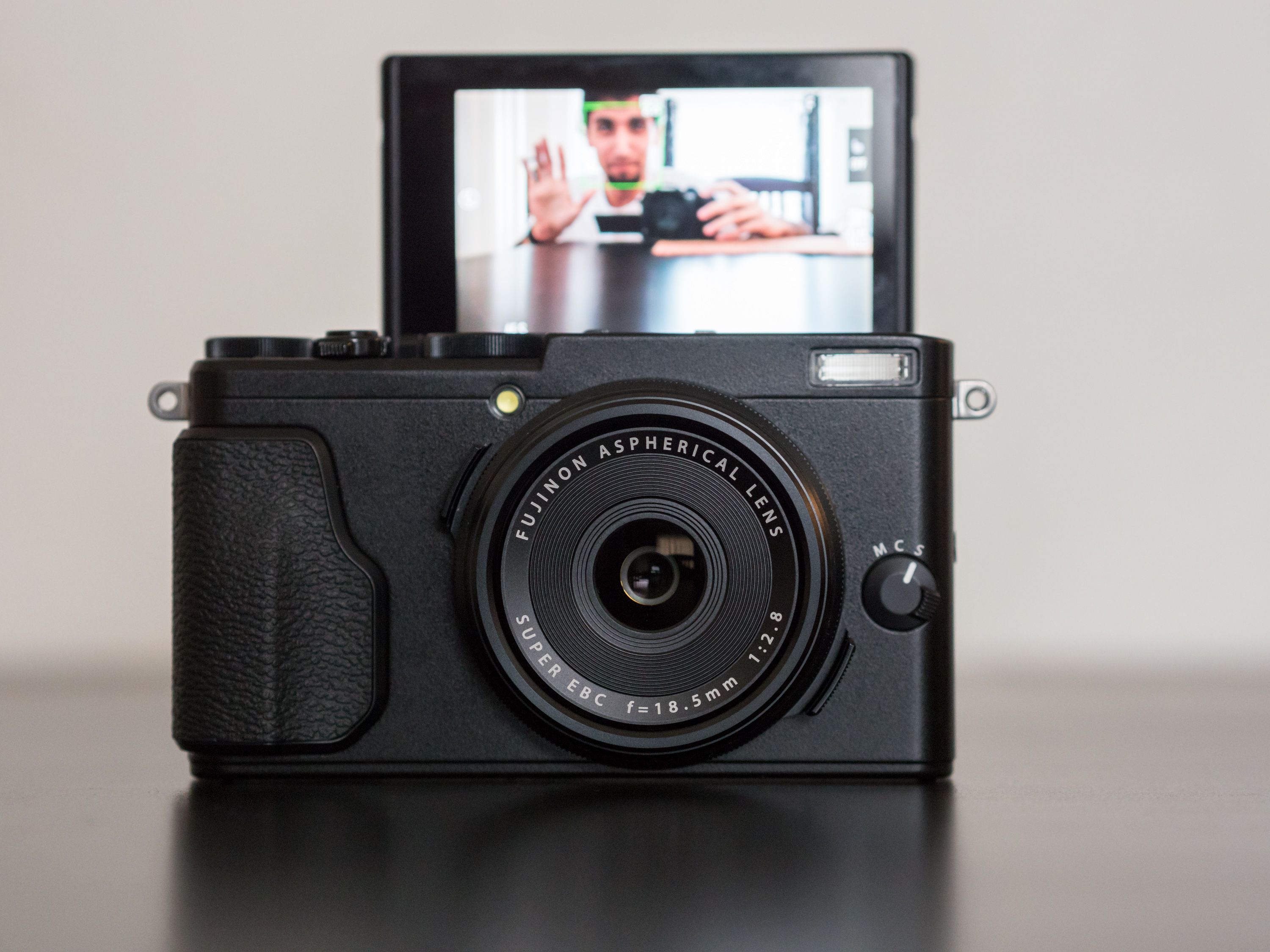
Between the wide, bright lens, bigger APS-C sized sensor, manageable 1080p footage, compact form factor, and access to the film simulations in video mode (no more colour grading in post!), the X70 makes a strong contender for the everyman video camera.
Wrapping Up
I recently gave up my compact camera, and while I don’t really miss the form factor, I do remember its appeal.
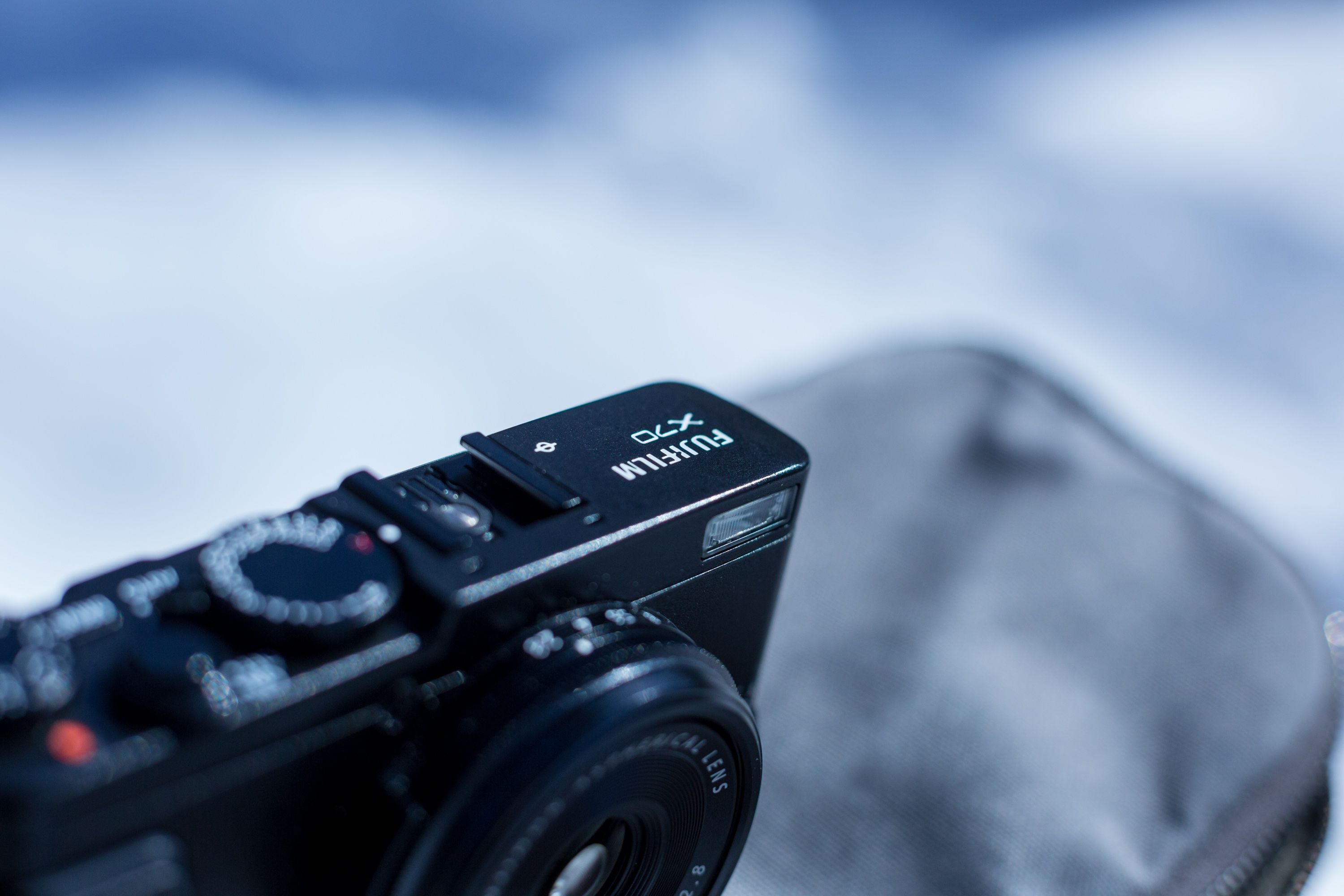 Pictured here on top of my Wotancraft Scout, a spectacular bag for mirrorless gear.
Pictured here on top of my Wotancraft Scout, a spectacular bag for mirrorless gear.
Whether it’s a secondary camera for professional photographers or the one and only shooter for enthusiasts, having a camera that’s both potent and portable is terrific.
Whether the X70 is the perfect incarnation of this form factor or not will depend a lot on your needs as a photographer, but I will say this: I don’t think there’s another camera that offers this level of image quality, shooting experience, and agility in this price range.
If you’re after a fixed-focal-length compact and you need an EVF, a built-in ND filter, and a more conventional 35mm equivalent field of view (with a faster lens), then you have the X100T. But if none of those things are important, or you’d prefer a wider field of view, smaller body, sharper lens, and articulating screen then the X70 is the Fuji for you.
If I were to buy a compact camera to pair with my X-Pro 2 today, it would almost certainly be the X70.